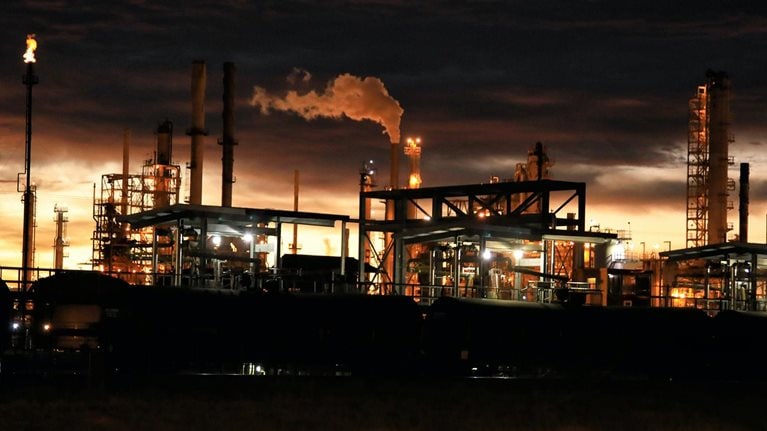Italgas was founded in 1837, making it the first Italian company to specialize in the distillation of solid fuels for illuminating-gas production. Today, nearly 200 years later, Italgas is helping to move the natural-gas industry forward with its decarbonization- and sustainability-related efforts. Recently, this has entailed launching an extensive effort to reduce the overall timing of infrastructure investments across the value chain, from the initial planning stages to project execution and operations and maintenance. The company aims to improve the quality of its natural-gas distribution infrastructure, shorten timelines, and provide better customer experiences.
To better understand Italgas’s investment management approach for capex, McKinsey’s Alessandro Agosta and Humayun Tai spoke with Paolo Gallo, the company’s CEO, about managing for capital expenditures and how to deliver systemic and sustainable impact.
McKinsey: Capital expenditure management is key for large infrastructure companies to deliver sustainable value. What is one imperative for infrastructure companies when they think about their capex strategies?
Paolo Gallo: The key challenge is to move away from a short-term view of optimization and to adopt a long-term, comprehensive perspective. Only concrete actions and interventions can help make sustainability critical to achieving the goals of the net-zero economy. That means also understanding the overall impact that infrastructure investments can generate.
The quality and effectiveness of infrastructure investments affect not only the company involved but also the entire ecosystem, which is made up of contractors, partners, employees, and municipalities, as well as citizens, who are the final beneficiaries of the investments.
In the past couple of years, we have been working toward a clear objective: connecting external and internal stakeholders to achieve the full comprehensive benefits derived from infrastructure investments. To improve end-to-end visibility and support cross-functional coordination, functions within Italgas—as well as certain public-administration offices and external suppliers—have access to the same information on the same platform. There, each group can stay updated on a project’s timeline, budget, and quality.
McKinsey: What steps can infrastructure leaders take in the near term to achieve comprehensive benefits from infrastructure investments?
Paolo Gallo: The first step should be to identify and remove potential roadblocks along the capital expenditure cycle, from initial investment planning to the asset’s operations and maintenance. By roadblocks, I mean anything that leads to inefficiencies in terms of time, cost, and quality, such as lacking real-time visibility of the project cycle, limited coordination across functions, and missing feedback loops from later stages. Addressing these limitations allowed us to deliver projects faster, more cost-effectively, and at better quality. As a result, we generated higher value not only for the company but also for all stakeholders—and ultimately for consumers.
In addition, creating transparency—particularly between internal teams and our partners—is fundamental to streamlining the capex cycle. All too often, miscommunication and a lack of information result in longer-than-anticipated schedules, budget overruns, and overall poor quality of work. We integrated data from legacy systems and other in-house tools to enhance process orchestration, automate actions, and improve workflows. Internal and external stakeholders use the same portal to centralize communication, archive data, and collect feedback easily. Streamlining this communication also allows us to resolve issues faster and review final project deliverables seamlessly.
Finally, digitalization and innovation are the key levers to create transparency, reduce inefficiency, and achieve the expected systemic impact. As an added bonus, digitalization and innovation can increase capex deployment speed as well as resilience [amid] supply chain disruptions. For example, during the COVID-19 pandemic, Italgas was able to continue construction work undisrupted because it had already developed an app that monitors construction sites remotely and automates infrastructure project reporting in real time.
McKinsey: What is driving innovation in capex management? And what are a few examples of how that innovation is being applied in the industry?
Paolo Gallo: The typical challenges that infrastructure companies face when they approach a project are navigating organizational and technical complexities and ensuring time and money are spent appropriately and efficiently. These issues can impede a project—and, ultimately, advancements in sustainable infrastructure—significantly. Deploying digital solutions for end-to-end capital investment management has helped us to stay innovative and productive.
One example would be the integration of permitting, engineering, and procurement phases on a single cloud platform, which allowed our teams to remove the silos between external and internal stakeholders. Creating this transparency allowed for faster timelines and easier procurement of materials, as well as faster onboarding of suppliers involved in construction sites. In addition, the cloud platform integration has provided us with full and real-time visibility of the whole process. Having all projects on the same open digital platform, ordered by priority, will allow, for example, the permitting team to react promptly on any request, sharing the expected authorization issue date.
Consequently, the procurement team can update the requirements for external contractors. Adding advanced-analytics algorithms on such a platform can further reduce the time and budget required for a given project.
Another example is the digitalization of different stages of the execution phase, which is key to guaranteeing that projects are on time, delivered with quality, and on budget. We developed a cloud-based app that integrates AI and machine-learning algorithms to run remote and automated quality checks on construction projects. Thanks to this platform, the construction progress of gas infrastructure and, consequently, payments to contractors are automatically recorded and triggered.
McKinsey: What are the key enablers for switching to longer-term capex investments? What would you recommend to a CEO to start this journey?
Paolo Gallo: Italgas has been around for a long time, and it has had to think long term before. Back then, companies were used to thinking and optimizing at a single-company level. Today’s complexity and sustainability objectives force us to think and optimize at an ecosystem level. Companies that want to thrive in this new context need to switch their mindset.
Be bold with investments at scale in technology and digital transformation, including transitions to the cloud—that is the first step in this journey. Digital transformation is the key enabler to create an advanced ecosystem and generate comprehensive and sustainable impact for both the company and society.
Switch to a systemic, longer-term business case rather than focusing on short-term company objectives. Expanding scope is crucial to deliver holistic impact, but it is also challenging because it requires objectives alignment among all stakeholders, project management advanced capability, and a true matrix organization.
Mobilize human capital at scale, including reskilling and upskilling internal and external resources. A digital factory is a powerful tool: it is a physical environment where people with different backgrounds exchange ideas and solve complex problems, leveraging the latest technology available. As I highlight in my book, Flight log: How to guide digital transformation between innovation and sustainability, digitalization is a journey; it is a flow transformation that needs to embrace and change the whole company continuously and incessantly. To stakeholders in charge of leading the digital transformation at organizations, I can tell you it is not an easy task. If you do not think in a holistic way that encompasses the whole company, not only do you risk missing important opportunities but you might also minimize the potential benefits generated by such a revolution.
McKinsey: What major changes do you foresee in natural-gas infrastructure over the next ten to 20 years? What’s on the horizon?
Paolo Gallo: For years, sustainability has been considered an almost abstract concept. There were loose goals centered on adjusting business strategies and objectives, but they did not come with an actionable framework to implement real change. Now, companies have started to transform their short-sighted, distant visions into concrete actions and interventions, which has helped achieve sustainability initiatives and bring us closer to reaching the goal of the net-zero economy. At Italgas, we have been working on this transition for some time, using the mentality that whatever we can measure, we can manage. This strategy has provided us with more precise goals to accomplish and a clearer way forward.
This article is part of Global Infrastructure Initiative’s Voices on Infrastructure.

